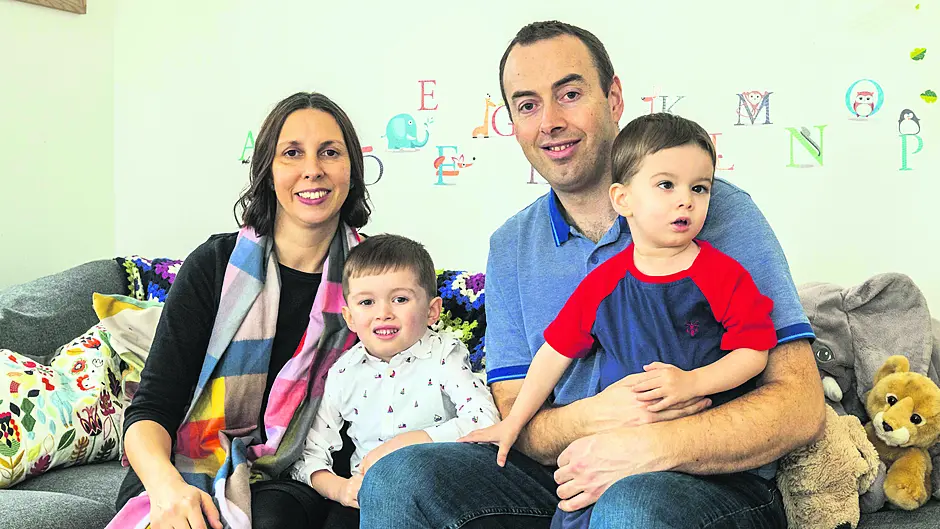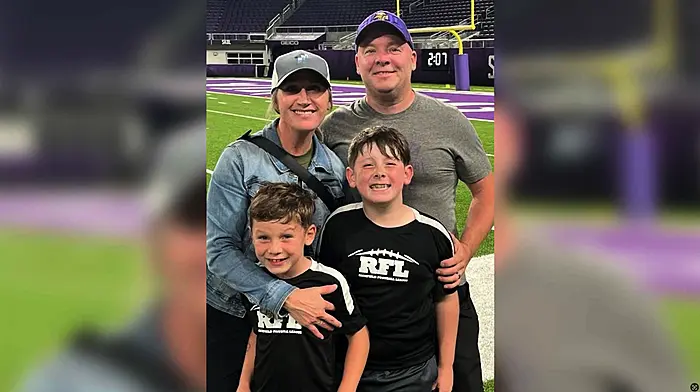Epileptic seizures were once part of Kate Maher’s daily life. To mark International Epilepsy Day, to raise awareness and also to help others, she’s sharing her experience of living with the condition
YOU’RE never cured of epilepsy, you just have to learn to live with it.
That’s the outlook of Clonakilty-based Kate Maher who at one point in her life was experiencing seizures daily.
Kate, originally from Bishopstown, was diagnosed with the condition when she was just five as a result of an infant convulsion. She doesn’t remember a time when it wasn’t part of her life.
With International Epilepsy Day taking place on February 13th, she’s sharing her story to raise awareness of the condition and in a bid to give other people hope.
‘When I was young I was having two to three seizures a week – some were like “absences,” where you’d feel yourself going into a sort of a daze; but others were what is called “complex partial seizures” which would have involved jerking, but I’d always remain awake. It’s like you’re still there but at the same time you’re not,’ Kate explains.
During her school going years, and beyond, she says she became an expert at concealing the seizures as back in the 90s, she felt there was still a stigma surrounding epilepsy.
She says she’d feel it coming on, or the ‘aura building.’
‘My speech would become mixed-up because my epilepsy is in my temporal lobe, and I’d have occasional jerking. I became an expert at hiding it and would go to the toilets in school, or behind the gym if we were outside,’ she said.
Growing up she was on medication for her epilepsy, but still the doctors struggled to control it.
After school she trained as a nurse and then a midwife, but by the time she was in her 20s her epilepsy worsened, so much so that by 2012 she had to stop driving, which she said was a massive loss.
‘By then I was having seizures of some sort almost daily, and feeling a mix of denial, frustration, vulnerability, sadness, anger and helplessness. My neurologist said he didn’t know what to do with me. All I wanted was to live a normal life like any young person but I felt like I’d been thrown on a scrapheap. It was like I was being told that what I had was incurable. But still I felt sure there had to be some hope out there,’ she said.
This glimmer of hope saw her seek an appointment with a top neurologist in London who, for the first time, diagnosed scarring on her left hippocampus, which is a major part of the brain.
‘That explained why my memory was so rubbish in school,’ Kate joked.
Back in Cork, she changed to a new neurologist, and it was agreed she was a potential candidate for surgery to remove the scarred region of the brain.
By this point, Kate had had her first tonic (stiffening) clonic (twitching) seizure, which would involve her blacking out, falling and foaming at the mouth.
‘The surgery was a daunting option, I didn’t even know if I’d wake up from it,’ she said.
But she went for it in 2015, the same year she married her husband Joe.
‘For six months post-op I was seizure-free. I couldn’t believe it. I was beginning to think perhaps this is it,’ she said.
However, when she and Joe went to see a comedian at the Opera House in Cork, she suffered a ‘massive’ seizure.
‘Joe joked that my timing was perfect as we were coming to the end of the first half. I was sitting in my seat and I remember feeling a strong sense of déjà vu, something I had never felt before, then the next thing I was coming around in the back of an ambulance. That was very hard to come to terms with after everything I’d been through,’ she admits honestly.
Kate’s meds were changed again and she describes the next two years as ‘rocky.’ Between June 2016 and November 2017 she had eight tonic clonic seizures.
‘After the surgery I had stopped having daily seizures – I was trying to look at the positives – but I was having much bigger ones, including one I’ll never forget in November 2017,’ she recalls.
That happened in bed early one morning before work where she seized for more than half an hour and had to be stretchered down the stairs and taken by ambulance to CUH where she didn’t wake up for hours.
That was also when she discovered she was pregnant with their first child.
The couple had earlier put starting a family on hold while she was still unstable with her epilepsy, but at that point they were trying to conceive.
‘I was sick of waiting,’ she said.
Her meds were changed again and incredibly since November 2017, she’s been seizure-free.
‘Last November was a big deal for me, it marked five years seizure-free,’ said Kate who is now a mum-of-two.
‘People joke that maybe it was the kids that settled me!’ she said.
‘I remember my epilepsy nurse specialist saying the brain after surgery is a bit like jelly, really wobbly, and that it would take two years for the jelly to settle. At the time I didn’t know what she was on about. But sure enough, my surgery was in November 2015, and my seizures stopped in November 2017.’
Kate, who is driving again, says she’s always aware her epilepsy is there.
‘I’m still on meds, and I’m still a little nervous about it. I always know it’s there, that it never leaves you, it’s here for good. That’s what my consultant told me after I had my first tonic-clonic seizure post-surgery, and that’s really what I needed to hear as I had always been chasing a cure. But epilepsy is never leaving me, it’s there until I die.’
As part of International Epilepsy Day she’d like to increase awareness around the condition.
‘Sometimes I think if someone collapses with a seizure, a lot of people assume it’s a heart attack.
‘I think there’s not enough awareness there on how to react to someone having a seizure, knowing to put them on their side, put something soft under their head, time the seizure, contact someone on their phone and stay with them until they recover. A lot of people know, but lots don’t.’
Kate knows she’s been so close to death many times because of her epilepsy, but her advice to others in the same situation is to never lose hope. ‘Always keep searching for answers, get a second opinion if you’re not happy with the first, don’t give up on trying new things, new medications and educate yourself. Just don’t give up.’








